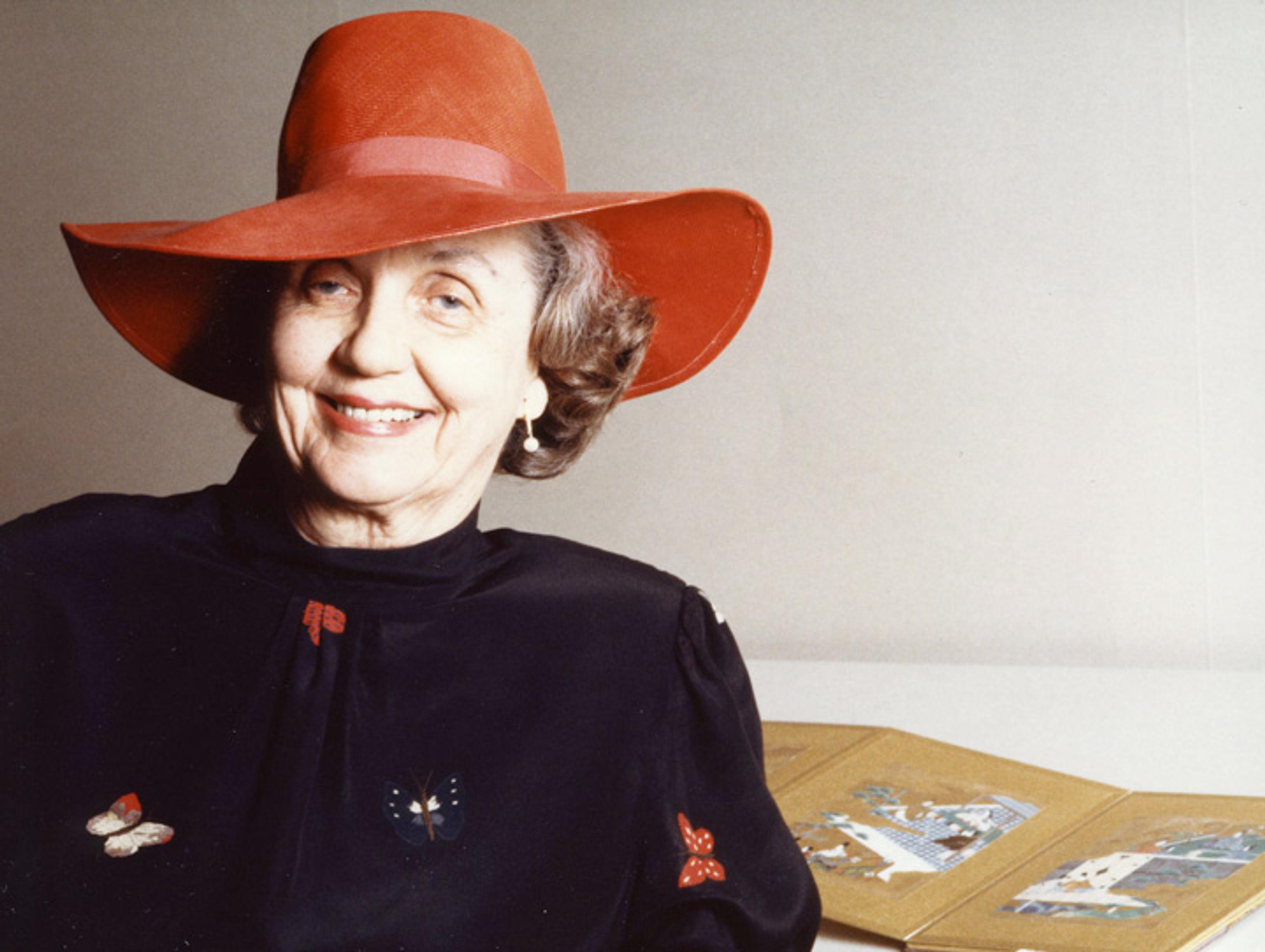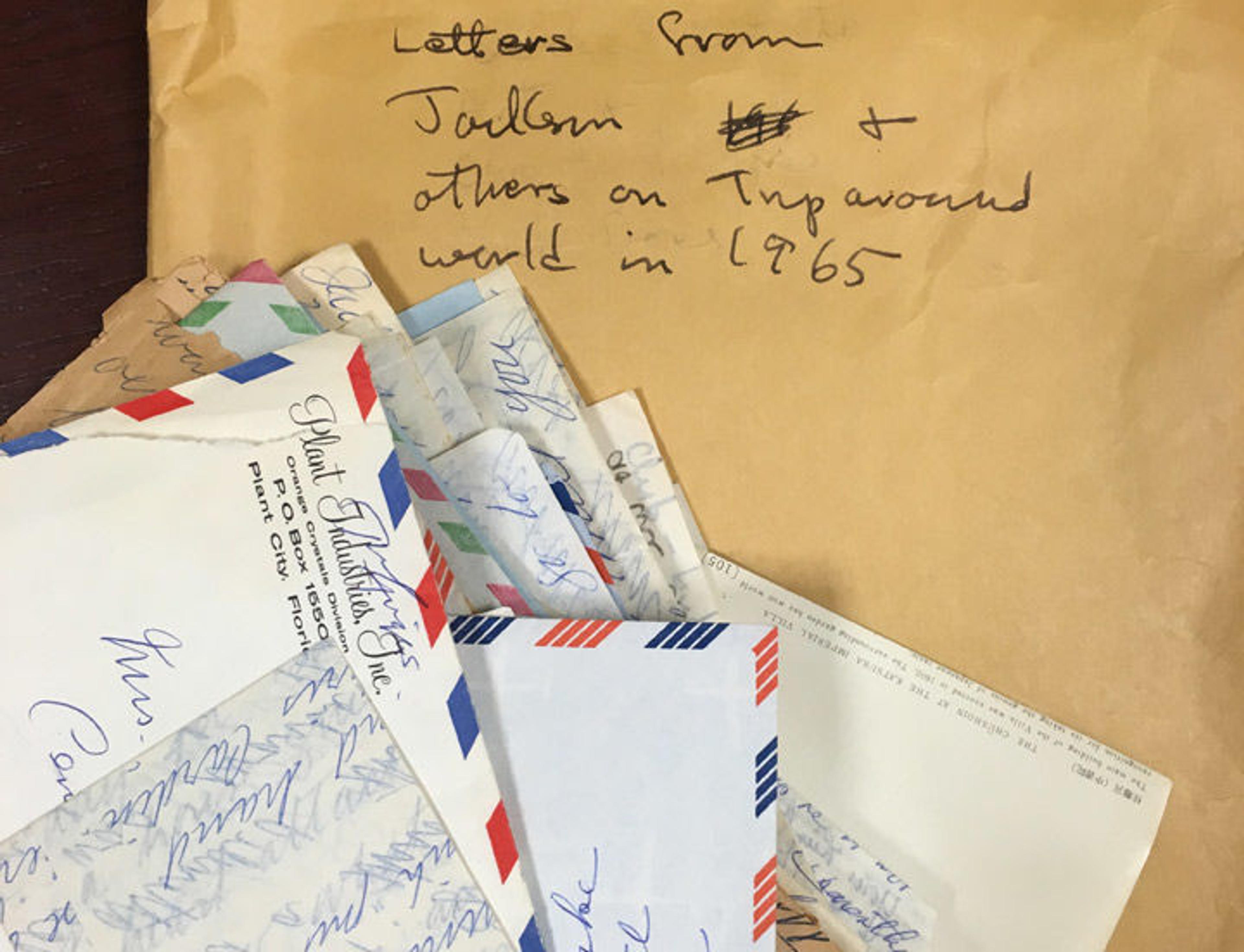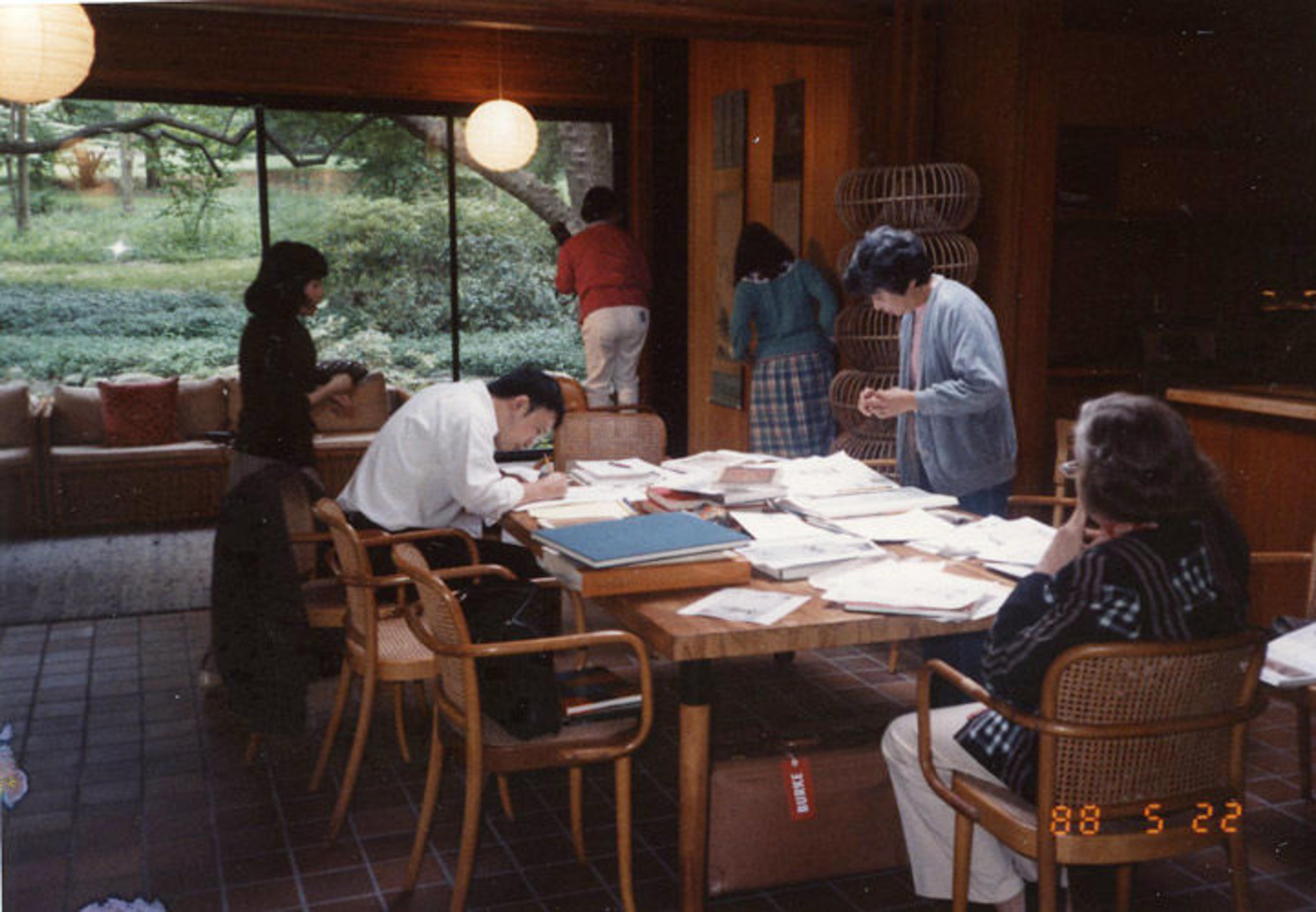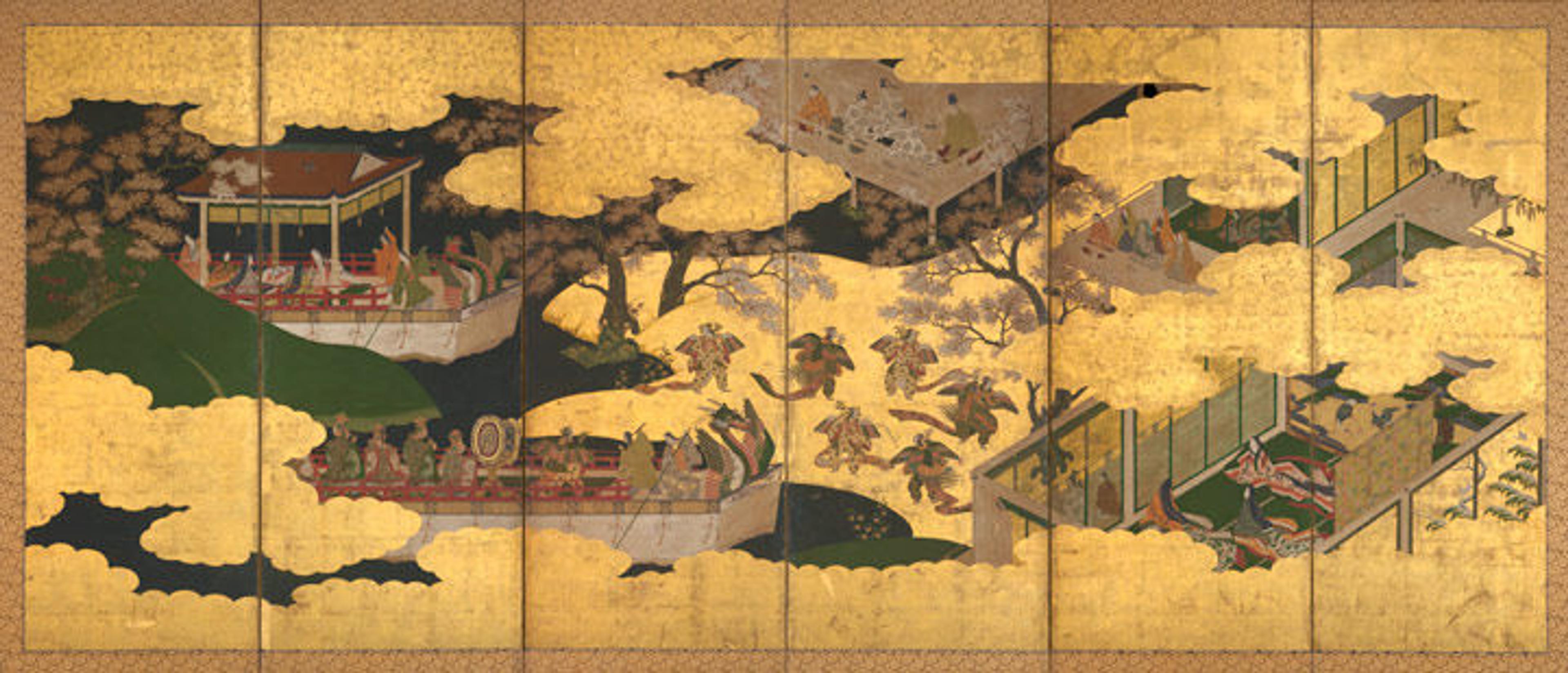Celebrating the Legacy of Japanese Art Collector Mary Griggs Burke

Mary Griggs Burke, 1985. Photo by Akira Kinoshita
Mary Griggs Burke's landmark bequest of over 300 masterworks of Japanese and Korean art to The Metropolitan Museum of Art is being honored in the exhibition Celebrating the Arts of Japan: The Mary Griggs Burke Collection, which opened October 20, 2015. In addition to Mrs. Burke's distinguished art collection and a $12,000,000 endowment to help fund future acquisitions, The Met also received a trove of correspondence, photographic prints, scrapbooks, and documents that illuminate her role as a pioneering collector and philanthropist. In a collaborative effort between the Museum Archives and Department of Asian Art, I am undertaking an 18-month project to organize these files and make them available for scholarly research. I am pleased to be able to share some of what I have learned about Mrs. Burke as a collector and philanthropist as I begin work with these records.
Since June 20 would have been Mrs. Burke's 100th birthday, it seems a timely moment to reflect on her legacy. For more about her early life and a wonderful tribute to her career, see Julia Meech's article "Following Her Bliss: Mary Griggs Burke (1916–2012)."
«Mary Griggs Burke's collection is widely regarded as one of the finest and most encompassing private collections of Japanese art outside of Japan. Born in 1916 and raised in Saint Paul, Minnesota, Mrs. Burke was the daughter of Theodore W. Griggs and the former Mary Steele Livingston, both heirs to family businesses in railroads, banking, lumber, and other ventures. Though she was introduced to Japanese art at an early age, growing up in her mother's eclectic Victorian-style home, Mary's love affair with Japanese culture began in earnest during a trip to research Japanese gardens for the design of her home in Oyster Bay, Long Island, in 1954. When she returned from Japan, Mrs. Burke joined the Japan Society in New York, and soon served on the board of directors, advising in matters of education and art.»

Mary Griggs Burke in front of the Kiyomizu-dera Temple during her first trip to Japan, August 16, 1954. Mary Griggs Burke papers
Mrs. Burke's interest in architecture grew into a passion for the fine arts as well, and soon Mary and Jackson Burke began collecting art together. The acquisition of 70 ukiyo-e paintings in 1963 seemed to be a turning point for the Burkes, and they began to identify themselves as serious collectors. In thinking about an exhibition space for their quickly growing collection, they commissioned a Japanese-style exhibition gallery in their New York City apartment, which they referred to as their "mini-museum," to store and display these works.
Mrs. Burke would travel to Japan on art-buying trips and return to the mini-museum with her treasures, where Jackson would arrange them. Mrs. Burke wrote about their partnership, "My husband applied his fine sense of design and his training in graphic arts to put together small, exquisite exhibitions. In choosing fine objects, we tried to develop a mood to suit a particular season or to appeal to the taste of the guests who were to be entertained on a particular day."[1] The Burkes' mini-museum became a center for Japanese art in New York as countless guests and study groups visited their gallery.

Letters Mrs. Burke received from Jackson Burke and others during her "trip around the world" in 1965. Mary Griggs Burke papers
Mrs. Burke and her husband Jackson took great pleasure in sharing their meticulously cultivated art collection with others. It was important to the Burkes that their art be admired in the right environment, and they insisted that a Japanese setting enhanced each object's uniqueness and beauty. Installation records from Mrs. Burke's archives detail which artworks were selected for exhibition and visitor logs reveal a who's who of Japanese art collectors and scholars. Over the years the mini-museum expanded to accommodate Mrs. Burke's collection, which grew to include religious objects and a room for tea ceremony.

Mini-museum installation layout with photographs, October 24, 1978. Mary Griggs Burke papers
The Burkes welcomed groups and scholars, but were especially encouraging of students. Mrs. Burke hosted an annual weekend of scholarship at her home in Long Island, where students had the unique opportunity to closely examine her rare works. Files in the archives that document art objects include numerous articles and master's theses written by graduate students, illustrating her support of generations of art scholars.

Professor Miyeko Murase and Columbia graduate students studying as Mary Griggs Burke looks on. Oyster Bay, Long Island, May 22, 1988. Mary Griggs Burke papers
Mrs. Burke believed that art education should occur through exhibition of the highest quality works, and thus loaned her pieces to numerous museums around the world. The Tokyo National Museum and Tokyo Metropolitan Art Museum featured her collection in Japan in 1985 and 2006, respectively, an incredible honor for a Western collector. In a letter written to a friend in 1973, recently discovered in the Burke archives, she described her goal of "having a total experience of beauty in looking at exquisite objects in a simple and elegant environment." Mrs. Burke wanted her collection to go where it could do the most good, to museums that reach wide audiences.
Celebrating the Arts of Japan: The Mary Griggs Burke Collection, on view until January 22, 2017, is the third exhibition at The Met to celebrate Mrs. Burke's collection, the first presented in 1975 and the second in 2000, for which the major catalogue Bridge of Dreams: The Mary Griggs Burke Collection of Japanese Art was produced. Part two of the current exhibition, which focuses on the figural, genre, and narrative paintings in her collection, goes on view May 28.

The entrance of The Met's 1975 exhibition Japanese Art: Selections from the Mary and Jackson Burke Collection
Works in the second rotation of the exhibition feature one of her favorite collecting themes, The Tale of Genji, and among the highlights is a screen illustrating the "Kochō," or "Butterflies," chapter. Mrs. Burke was encouraged to read the early 11th-century novel by her friend and advisor Miyeko Murase, professor of Japanese Art History at Columbia University. Mrs. Burke wrote of the tale, "This great and intricate novel, which has had a pervasive effect on Japanese culture, touched me deeply. I became aware of how important both prose and poetry are to the Japanese, and how closely they are bound to the visual arts of painting and calligraphy."[2]

"Butterflies" ("Kochō"), Chapter 24 from The Tale of Genji (Genji monogatari). Momoyama period (1573–1615). Six-panel folding screen; ink, color, gold, and gold leaf on paper; 65 in. x 12 ft. 3/4 in. (165.1 x 367.7 cm). The Metropolitan Museum of Art, New York, Mary Griggs Burke Collection, Gift of the Mary and Jackson Burke Foundation, 2015 (2015.300.32)
In addition to lavishly illustrated paintings and lacquerware inspired by traditional Japanese literature, there will be other celebrated examples of paintings and decorative arts on display. For instance, Mrs. Burke's prized, "imperfectly" beautiful Black Seto teabowl, known as "Iron Mallet" (Tettsui) will remain on view. The exhibition will also feature Fenggan, Hanshan, and Shide, a pair of ink paintings by Reisai from first half of the 15th century that capture the essence of so-called Zen ink painting, and the intense and dynamic Battle at Rokuhara, from The Tale of the Heiji Rebellion (Heiji monogatari), an exceedingly rare surviving section of a Kamakura-period handscroll that depicts the energy and glory of early medieval samurai warfare.

Battle at Rokuhara, from The Tale of the Heiji Rebellion (Heiji monogatari), first quarter of the 14th century. Kamakura period (1185–1333). Handscroll fragment mounted as hanging scroll; ink and color on paper; Image: 6 13/16 x 5 11/16 in. (17.3 x 14.5 cm), Overall with mounting: 50 5/16 x 15 1/16 in. (127.8 x 38.2 cm), Overall with knobs: 50 5/16 x 16 7/8 in. (127.8 x 42.8 cm). The Metropolitan Museum of Art, New York, Mary Griggs Burke Collection, Gift of the Mary and Jackson Burke Foundation, 2015 (2015.300.20)
As we celebrate Mary Griggs Burke's 100th birthday, we hope you will visit the newly installed paintings and decorative arts that show other dimensions of this collection of Japanese art of understated elegance. We trust that Mrs. Burke would have been delighted to see her collection being so enjoyed by admirers of Japanese art from all over the world.
Notes
[1] The Mary Griggs Burke Collection. "History of the Collection." Accessed May 26, 2016. http://burkecollection.org/about
[2] Ibid.
Angela Salisbury
Angela Salisbury is a senior associate for Archival Processing in Museum Archives.